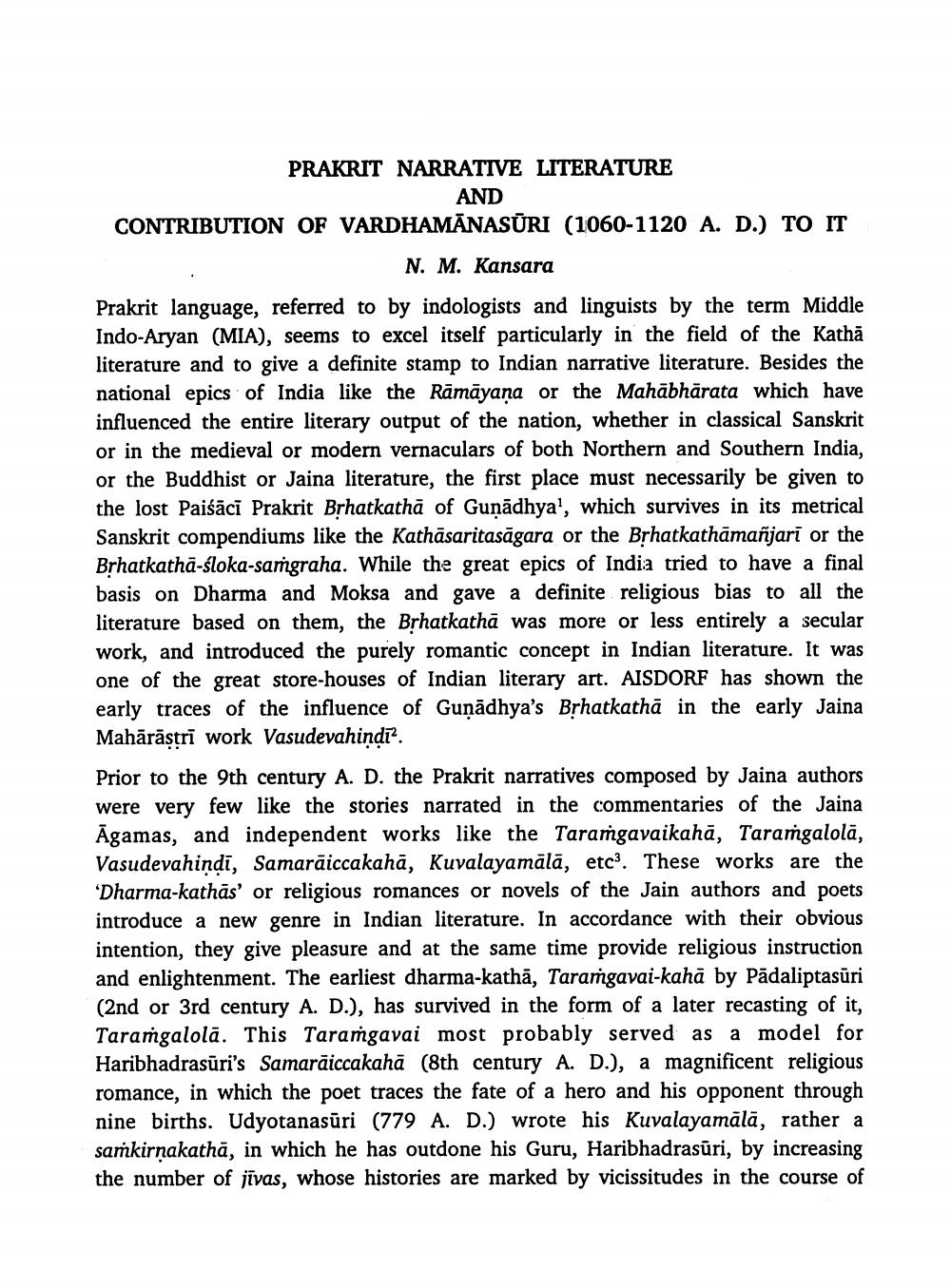________________
PRAKRIT NARRATIVE LITERATURE
AND CONTRIBUTION OF VARDHAMĀNASŪRI (1060-1120 A. D.) TO IT
N. M. Kansara Prakrit language, referred to by indologists and linguists by the term Middle Indo-Aryan (MIA), seems to excel itself particularly in the field of the Kathā literature and to give a definite stamp to Indian narrative literature. Besides the national epics of India like the Rāmāyana or the Mahābhārata which have influenced the entire literary output of the nation, whether in classical Sanskrit or in the medieval or modern vernaculars of both Northern and Southern India, or the Buddhist or Jaina literature, the first place must necessarily be given to the lost Paiśācī Prakrit Brhatkathā of Guņādhya', which survives in its metrical Sanskrit compendiums like the Kathāsaritasāgara or the Brhatkathāmañjarī or the Brhatkathā-śloka-samgraha. While the great epics of India tried to have a final basis on Dharma and Moksa and gave a definite religious bias to all the literature based on them, the Brhatkathā was more or less entirely a secular work, and introduced the purely romantic concept in Indian literature. It was one of the great store houses of Indian literary art. AISDORF has shown the early traces of the influence of Guņādhya's Brhatkathā in the early Mahārāstrī work Vasudevahindi?.
Prior to the 9th century A. D. the Prakrit narratives composed by Jaina authors were very few like the stories narrated in the commentaries of the Jaina Āgamas, and independent works like the Taramgavaikahā, Taramgalolā, Vasudevahindi, Samarāiccakahā, Kuvalayamālā, etc. These works are the 'Dharma-kathās' or religious romances or novels of the Jain authors and poets introduce a new genre in Indian literature. In accordance with their obvious intention, they give pleasure and at the same time provide religious instruction and enlightenment. The earliest dharma-kathā, Taramgavai-kahā by Pādaliptasūri (2nd or 3rd century A. D.), has survived in the form of a later recasting of it, Taramgalolā. This Taramgavai most probably served as a model for Haribhadrasūri's Samarāiccakahā (8th century A. D.), a magnificent religious romance, in which the poet traces the fate of a hero and his opponent through nine births. Udyotanasūri (779 A. D.) wrote his Kuvalayamālā, rather a samkirnakathā, in which he has outdone his Guru, Haribhadrasūri, by increasing the number of jīvas, whose histories are marked by vicissitudes in the course of




